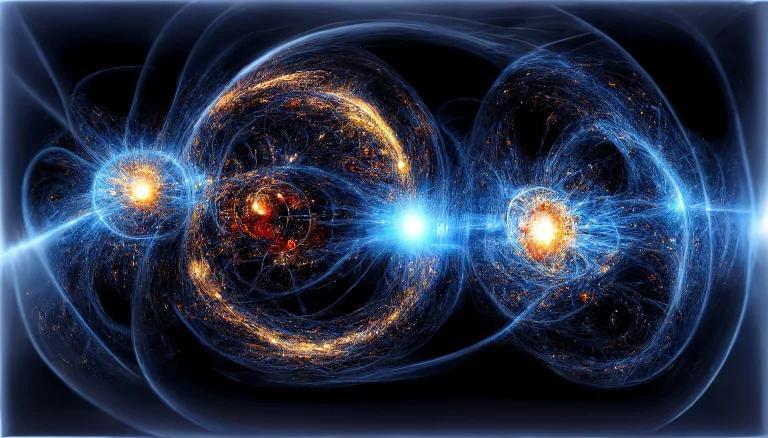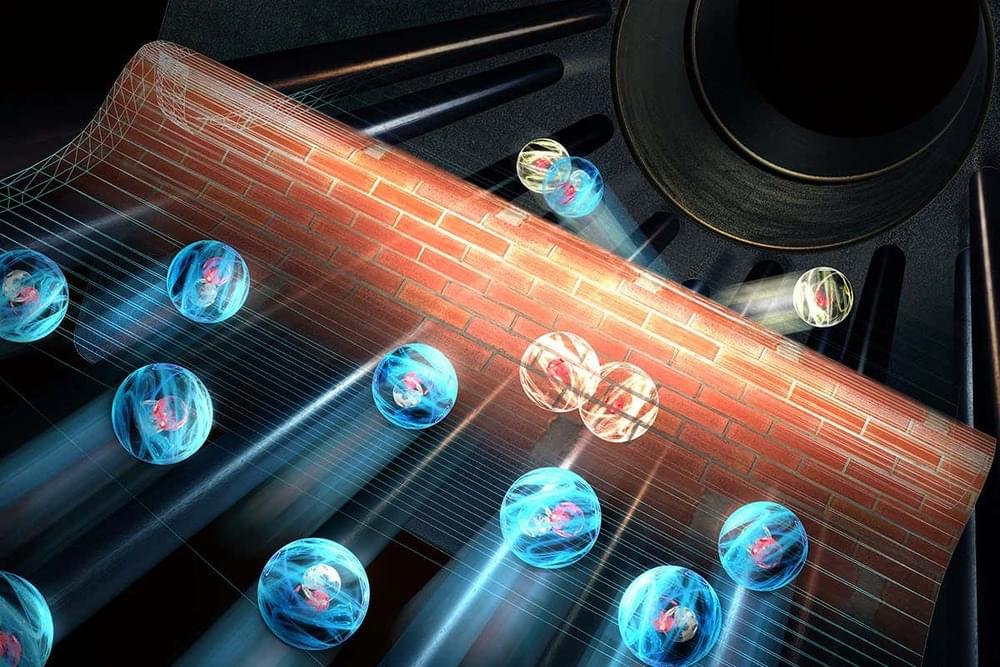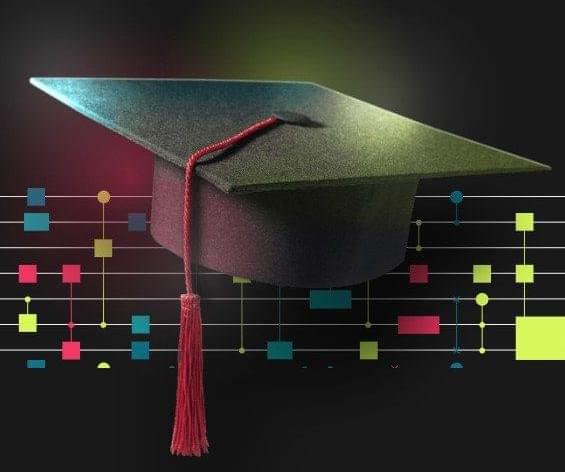Event horizon should interact with quantum states.


Julian Barbour, physicist, talks the illusion of time, the origin of the universe, and what is reality. He also discusses his newest book, “The Janus Point: A New Theory of Time,” which makes the radical argument that the growth of order drives the passage of time — and shapes the destiny of the universe.
Read “The Janus Point”: https://www.basicbooks.com/titles/julian-barbour/the-janus-point/9780465095469/
Julian Barbour’s Website: http://www.platonia.com/
Julian Barbour is a physicist with research interests in quantum gravity and the history of science. Since receiving his PhD degree on the foundations of Albert Einstein’s general theory of relativity at the University of Cologne in 1968, Barbour has supported himself and his family without an academic position, as an author and translator.
Watch more Closer To Truth interviews with Julian Barbour: https://bit.ly/3eIW96E
Register for free at closertotruth.com for subscriber-only exclusives: http://bit.ly/2GXmFsP
Closer to Truth presents the world’s greatest thinkers exploring humanity’s deepest questions. Discover fundamental issues of existence. Engage new and diverse ways of thinking. Appreciate intense debates. Share your own opinions. Seek your own answers.

According to reports from Spanish newspaper El País, researchers have discovered a way to speed up, slow down, and even reverse quantum time by taking advantage of unusual properties within a quantum world in specific ways. It’s a huge breakthrough, which the researchers have detailed in a series of six new papers featured in Advancing Physics.
The papers were originally published in 2018, and they detail how researchers were able to rewind time to a previous scene, as well as even skip several scenes forward. Being able to reverse and even control quantum time is a huge step forward, especially as we’ve seen increasing movements into quantum simulators.
The realm of quantum physics is a complex one, no doubt, and with analog quantum computers showing such promise at solving intense problems, it only seens fitting that research into controlling and reversing quantum time would prove so fruitful. The researchers say that the control they can acquire on the quantum world is very similar to controlling a movie.

A team led by Boston College has devised a new quantum sensor method to image and comprehend the source of photocurrent flow in Weyl semimetals.
In a recent paper published in the journal Nature Physics.
As the name implies, Nature Physics is a peer-reviewed, scientific journal covering physics and is published by Nature Research. It was first published in October 2005 and its monthly coverage includes articles, letters, reviews, research highlights, news and views, commentaries, book reviews, and correspondence.
Get a Wonderful Person Tee: https://teespring.com/stores/whatdamath.
More cool designs are on Amazon: https://amzn.to/3wDGy2i.
Alternatively, PayPal donations can be sent here: http://paypal.me/whatdamath.
Hello and welcome! My name is Anton and in this video, we will talk about new explanations of the Fermi paradox focusing on the Hart Tipler Conjecture that tries to disprove the existence of extraterrestrial intelligence.
Links:
https://ui.adsabs.harvard.edu/abs/1975QJRAS…16…128H/abstract.
https://arxiv.org/abs/2301.09575
Potential other resolutions of Fermi paradox:
https://www.youtube.com/watch?v=b3xro2jHevk.
https://www.youtube.com/watch?v=k_B9YP5nEWw.
https://www.youtube.com/watch?v=b3xro2jHevk.
Hawking radiation: https://youtu.be/6h6MgvBLrxk.
Penrose process: https://youtu.be/A-WIsnoX2Uw.
0:00 Intro.
0:40 Hart-Tipler Conjecture in a nutshell.
3:40 Main criticism of this idea.
7:10 Potential conclusions.
9:00 Potential solutions from Quantum Computing.
Support this channel on Patreon to help me make this a full time job:
https://www.patreon.com/whatdamath.
Bitcoin/Ethereum to spare? Donate them here to help this channel grow!
bc1qnkl3nk0zt7w0xzrgur9pnkcduj7a3xxllcn7d4
or ETH: 0x60f088B10b03115405d313f964BeA93eF0Bd3DbF
Space Engine is available for free here: http://spaceengine.org.

Do you want to get started with Quantum Machine Learning? Have a look at Hands-On Quantum Machine Learning With Python.
This article will explain the most important parts of the Quantum Approximate Optimization Algorithm (QAOA). QAOA is a machine learning algorithm that you can use to solve combinatorial optimization problems.

When two forms of hydrogen smash together an unusual process called quantum tunnelling can occur. Researchers have now worked out how rarely it happens.
While tunneling reactions are remarkably hard to predict, a group of researchers were able to experimentally observe such an effect, marking a breakthrough in the field of quantum chemistry.
Tunnel Effect
Predicting tunnel effects is very difficult to pull off. The mechanically exact quantum description of chemical reactions that cover over three particles is quite hard. If it covers over four particles, it is almost impossible to pull off. In order to stimulate the reactions, scientists use classical physics but have to push aside the quantum effects. However, EurekAlert reports that there is a limit to classically describing these chemical reactions. What, then, is the limit?

We’ll send you a myFT Daily Digest email rounding up the latest Tech Tonic news every morning.
In a new season of Tech Tonic, FT tech journalists Madhumita Murgia and John Thornhill investigate the race to build a quantum computer, the impact they could have on security, innovation and business, and the confounding physics of the quantum world.

In an interview with EE Times, Classiq CEO Nir Minerbi said Classiq’s academic program is an essential part of its broader strategy to expand the platform’s reach and promote the quantum computing business.
“We believe that offering this program will give students the tools and knowledge they need to learn practical quantum software-development skills while also providing researchers with a streamlined means of developing advanced quantum computing algorithms capable of taking advantage of ever more powerful quantum hardware,” he said. “In addition, our program enables students and researchers to test, validate and run their quantum programs on real hardware, providing valuable real-world experience. Ultimately, we think that our academic program will have a significant impact on the quantum computing community by promoting education and research in the field—and helping to drive innovation and progress in the industry.”
Classiq and Microsoft are among the top companies developing quantum computing software. The quantum stack developed by the firms advances Microsoft’s vision for quantum programming languages, which was published in the 2020 issue of Nature.